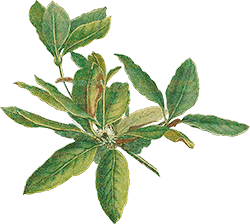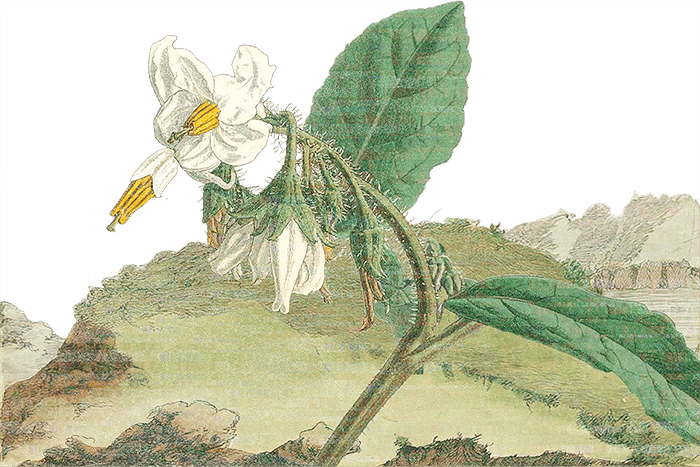On today’s show we learn about the Uke Lily, a critically endangered flowering plant native to eastern Asia, specifically the Amami Islands of Japan.
Rough Transcript
Intro 00:05
Welcome to Bad at Goodbyes.
On today’s show we consider the Uke Lily.
Species Information 02:05
The Uke Lily is a critically endangered flowering plant native to eastern Asia, specifically the Amami Islands of Japan in the Pacific Ocean located roughly 200 miles south of “mainland Japan” and 400 miles east of mainland China. Its scientific name is Lilium ukeyuri.
Description
The Uke Lily is a perennial herbaceous plant. Perennial categorizes plants that grow and bloom over the spring and summer, go dormant in the autumn and winter, and then return with new growth in the spring. Compare this to annuals who complete their entire life cycle in a single year, growing, blooming, and dying within one annual cycle.
Herbaceous describes plants without woody stems, so grasses, ferns, flowers, some vegetables, herbs, these are plants with soft, green, flexible stems with little to no woody tissue. Contrast this with woody plants like trees and shrubs which do have hardened wood stems, trunks and branches.
So the Uke Lily is a perennial herbaceous plant, with a growth and dormancy lifecycle that lasts across multiple years and has green stems. From an underground bulb it grows a single stem which can reach heights of 1-3 feet. A bulb is a contained, subterranean plant structure that stores nutrients and energy, allowing a plant to survive its dormant periods, containing a compressed stem, modified leaves holding stored food, a basal plate from which roots emerge, and grows that main stem (or central shoot) that emerges above ground growing leaves and the Lily’s flower.
Reproduction
The Uke Lily produces one flower per individual, once a year from late May to June. That flower is wildly beautiful. They’re large and trumpet-shaped, growing out horizontally or nodding slightly downturned. Their six tepals, these are petal-like structures, are a silky bright white without spots or other markings. Each flower has six stamen, the pollen producing, male reproductive organ, with orange-ish, reddish, brown pollen. They have a single light greenish pistil, with a rounded domed stigma (that’s the pollen-receiving top of the female reproductive organs).
We do not know who pollinates the Uke Lily, though its white coloration and trumpet-shaped flower form suggest that flying insects, like moths, with a long proboscis (a tongue-like structure able to reach the nectar deep in the trumpet flower form), are likely candidates.
We also do not know how their seeds are dispersed though given their dry fruit and cliffside growth, it is likely seeds are distributed via barochory. That’s gravity. The fruit falls from the flower, its seed coat splits open and its seeds germinate, where they land.
Uke Lily have a long germination cycle, and can take 12 months or more to sprout.
Habitat
The Uke Lily is native to eastern Asia, specifically the Japanese Amami Islands, a part of Ryukyu Archipelago in Kagoshima Prefecture. Today they are found on five islands: Amami Oshima, Kakeromajima, Yoroshima, Ukejima and Tokunoshima.
Across these five islands it only occupies less than 8 square miles. It is found exclusively on steep sloped rocky cliffsides, growing in the thin soil collected in the cracks of the bouldered cliffs. Botanists describe plants adapted to these kinds of conditions as chasmophytes, so a plant that grows in rock fissures, cracks, on mountainous outcrops, that can survive in shallow, low-nutrient soils.
Here in the Amami Islands, which split off of the Eurasian Plate roughly two millions years ago, these coastal cliffsides are quartz, sandstone, mudstone and the Uke Lily tends to grow in the upper third of these cliffs alongside coastal grasses and low-lying, salt-tolerant shrubs, clinging to the sheer slopes, that rise hundreds of feet above clear turquoise ocean waters.
This is a humid subtropical climate, with warm, wet summers and mild winters. Summer high temperatures, average in the upper 80s°F, and winter lows only drop into the 50s°F. These islands receive as much as 120 inches of rainfall per year.
The Uke Lily shares its island home with:
Latouche’s Rhododendron, Amami Isikawa’s Frog, Amami Rabbit, Banded Ground Gecko, Okinawa Oak, Siebold’s Chinquapin, [Ree-you-cue] Ryukyu Long-Tailed Giant Rat, Anderson’s crocodile newt, Flying Spider Monkey Tree Fern, Oshimake Snail, Habu Viper, Kuroiwa’s Ground Gecko, Amami woodcock, Amami Ring-Cupped Oak, Black-Naped Tern, Amami Thrush, Tokunoshima Ebine, and many, many more.
In The Dream
————
In the dream,
At a distance, a Ukejima cliffside, a green cloak draped over a stoney sleeping titan, pinpricked with white. In the dream Spilt sugar grains in tall grasses, Snowflakes on a jade tea set, soft bright punctuation (periods and apostrophes) in an emerald sentence. A loneliness in the lush.
In the dream.
————
Threats
Historically, the Uke Lily population has been reduced by human collection from its native wild habitat. Its large, beautiful, and sweet smelling flowers are desirable in decorative gardening. In the 19th and 20th centuries, commercial harvesting for the international bulb trade contributed significantly to the Uke Lily’s initial decline.
And this threat persists. So today the plant is legally protected and removal from their habitat is prohibited, but there are still documented reports of poaching from protected wildernesses as recently as 2019. In a 2009 survey of the species and their habitat, the authors explain why their report does not include location data, stating they did not “place accurate GPS-data in the public domain… to protect the remaining plants from picking for sale on the black market.”
There is a kind of negative reinforcement here: The plant long prized for its beauty, is overharvested. Now with a dwindling population it is considered rare, and so more highly valued and more deeply sought after for its uniqueness, its scarcity, its rarity. Which then puts its wild population at even greater risk of poaching.
Human infrastructure and development, specifically road construction, also threatens the species. And human induced climate change is a longterm threat, global warming is altering weather patterns and increasing the frequency and severity of extreme weather. The Amami Islands already see frequent typhoons, and with such a small population a dangerous storm could have devastating effect on the Uke Lily.
Conservation
Fortunately, the Uke Lily is legally protected by both the Japanese Ministry of the Environment and the Kagoshima Prefecture. Their natural habitat on Ukejima is protected, declared a Prefectural Natural Monument in 2008. Much of its range is also protected by the Amami Guntō National Park which was just established in 2017 and extends across multiple islands in the Amami archipelago.
Nevertheless the Uke Lily has been considered critically endangered on the IUCN Red List since 2022 and their population is currently in decline.
Our most recent counts estimate that less than 400 Uke Lily remain in the wild.
Citations 18:19
Amagi Town History, Culture, Industry and Science Information Center Yui no Yate - https://jmapps.ne.jp/amagi/det.html?data_id=5799
Compton, J. (2021), Two Endemic And Critically Endangered Ryukyu Island Lilies Lilium Nobilissimum And Lilium Ukeyuri (Liliaceae). Curtis’s Botanical Magazine, 38: 240-259. – https://doi.org/10.1111/curt.12385
Hogg, Robert. 1880. “A New Lillium”. The Journal of Horticulture, Cottage Gardener, and Home Farmer : A Chronicle of Country Pursuits and Country Life, Including Poultry, Pigeon and Bee-Keeping. Series 3. Vol. 27. 1893. London. – https://www.biodiversitylibrary.org/page/55535067
Horizon (Amami). Futoshi Hamada. “Endemic Plants of Amami”. - https://amami-horizon.com/en/nature/plant/rare-plants
Journal of Phytogeography and Taxonomy 57 : 77-87, 2009. Maeda, Yoshiyuki, Miyamoto, Junko, Ozaki, Kemurio, Moriguchi, Mitsuru, Kakishita, Ai. “Natural distribution of Lilium alexandrae (Liliaceae) in Amami Islands of Ryukyu Archipelago, Japan”. - https://doi.org/10.24517/00053418
Ministry of the Environment, Japan. 2022. Lilium ukeyuri (errata version published in 2022). The IUCN Red List of Threatened Species 2022: e.T90230615A223035828. – https://dx.doi.org/10.2305/IUCN.UK.2022-1.RLTS.T90230615A223035828.en
Ministry of the Environment Government of Japan (JCN1000012110001). Kyushu Okinawa Amami Nature Conservation Office. “Amamigunto National Park” – https://www.env.go.jp/en/nature/nps/park/amami/point/index.html
Wikipedia – https://en.wikipedia.org/wiki/Amami_Islands & https://ja.wikipedia.org/wiki/ウケユリ
Music 19:42
Pledge 26:35
I honor the lifeforce of the Uke Lily. I will commit its name to my record. I am grateful to have shared time on our planet with this being. I lament the ways in which I and my species have harmed and diminished this species. I grieve.
And so, in the name of the Uke Lily I pledge to reduce my consumption. And my carbon footprint. And curb my wastefulness. I pledge to acknowledge and attempt to address the costs of my actions and inactions. And I pledge to resist the harm of plant and animal kin and their habitat, by individuals, corporations, and governments.
I forever pledge my song to the witness and memory of all life, to a broad celebration of biodiversity, and to the total liberation of all beings.

